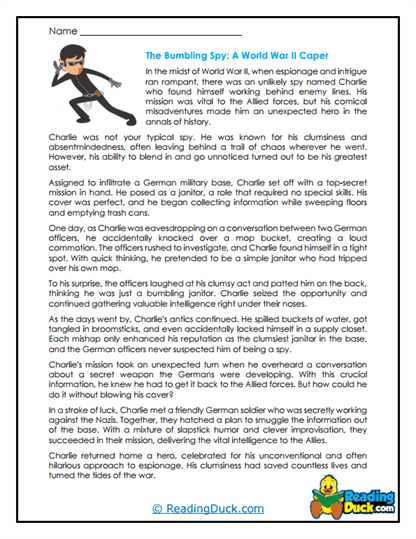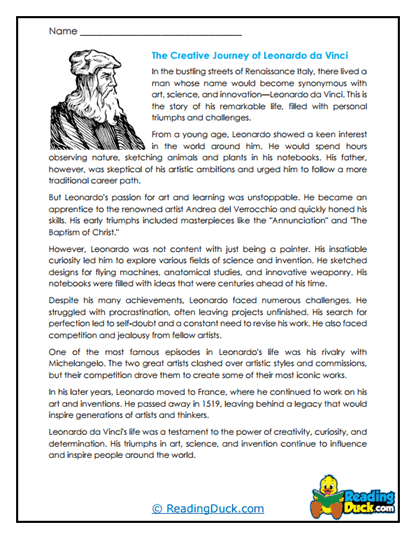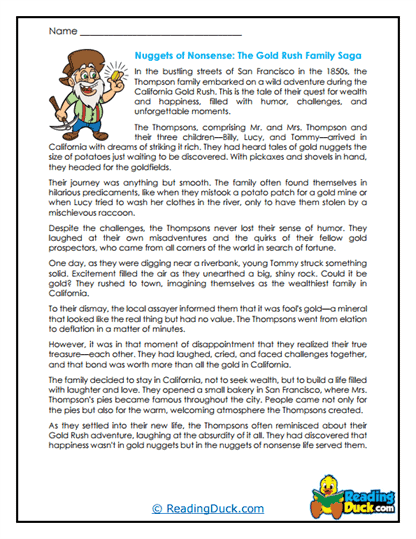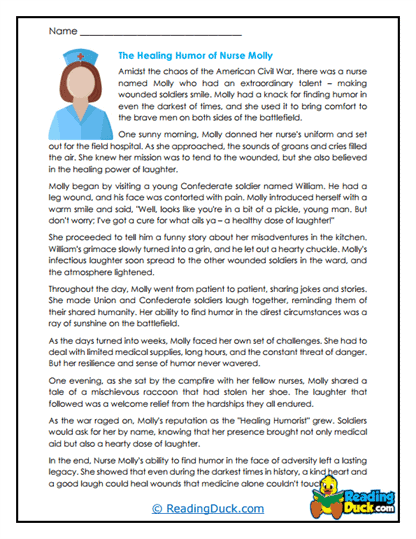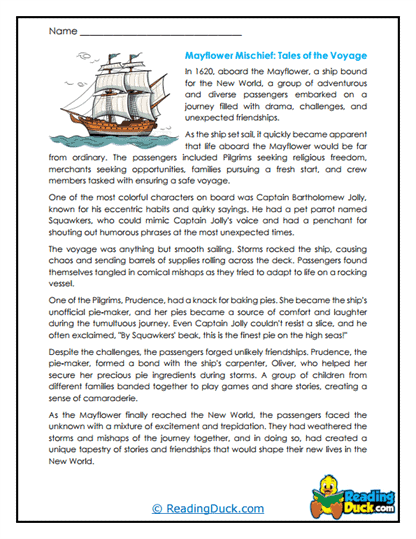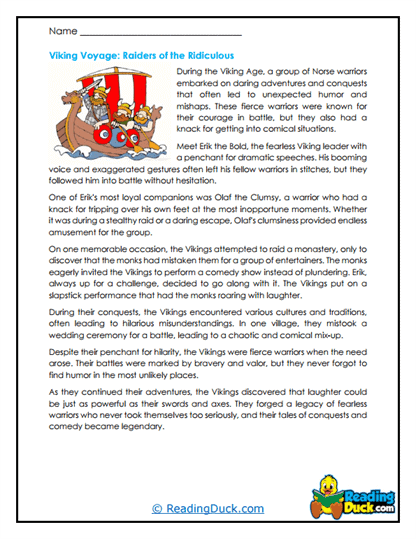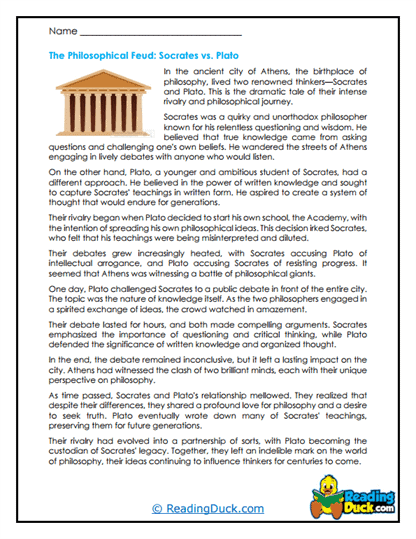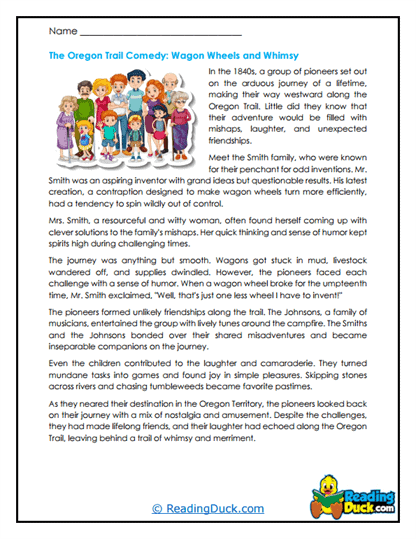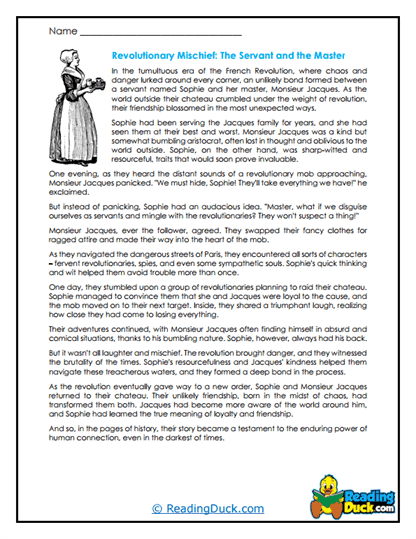Historical Drama Worksheets
About Our Historical Drama Worksheets
Our Historical Drama Worksheets offer a unique and engaging way for students to immerse themselves in the rich world of history, explored through the lens of drama. These worksheets provide reading passages that capture key elements of the historical drama genre, followed by a comprehensive set of questions, including multiple-choice, short-answer, and open-ended response formats. Each worksheet encourages students to critically analyze the text, understand historical contexts, and connect emotionally with characters facing significant events in the past.
Available in PDF format, these worksheets are designed for ease of use—simply download, view, and print as needed for classroom or individual work. Each worksheet also comes with a downloadable answer key, enabling educators to quickly assess student comprehension and foster deeper discussions. Whether you're teaching literature, drama, or history, these worksheets are an excellent tool for introducing students to historical drama, helping them think critically about how the genre blends factual history with creative storytelling.
Understanding the Historical Drama Genre
Historical drama is a genre that combines elements of drama with historical events, real-life figures, and authentic settings. This genre seeks to depict significant moments from history, often focusing on personal stories of conflict, ambition, love, and tragedy set against the backdrop of historical upheaval. By presenting these stories in a dramatic form, historical dramas give students the opportunity to engage with the past on an emotional and intellectual level.
Themes commonly found in historical drama include:
- Power struggles and politics: Dramas may depict monarchs, governments, or revolutionary movements, examining the impact of leadership and governance on ordinary lives.
- Social change and conflict: Stories often focus on moments of social transformation, such as wars, civil rights movements, or cultural revolutions.
- Personal sacrifice and duty: Historical dramas often highlight the tension between personal desires and public responsibility, as characters face difficult choices in times of crisis.
- The human impact of historical events: Rather than focusing purely on historical facts, historical drama emphasizes how major events affect individuals and families, giving students a personal connection to the past.
Our Historical Drama Worksheets guide students through these themes, providing them with the tools to analyze how history is depicted through dramatic storytelling. The passages in the worksheets bring history to life by focusing on key moments of tension and character development, allowing students to explore how the past influences the personal and political conflicts in the narrative.
Enhancing Critical Thinking and Analysis
The Historical Drama Worksheets are carefully designed to help students develop critical thinking skills by encouraging them to delve into both the historical content and the dramatic structure of the text. By analyzing historical events alongside the emotional journeys of the characters, students will gain a deeper understanding of the genre’s unique blend of fact and fiction.
The worksheets offer a range of question formats:
- Multiple-choice questions: These questions test students’ ability to identify key historical events, understand character motivations, and recognize important plot developments. For example, a multiple-choice question may ask students to choose which historical event led to a character’s major decision.
- Short-answer questions: These require students to provide more detailed responses, explaining how certain events shaped the narrative or how the characters’ actions are influenced by the historical context. A short-answer question might prompt students to describe how a revolution impacts a particular family or individual.
- Open-ended response questions: These prompts encourage deeper reflection and creative thinking. For example, students may be asked to compare the personal conflicts in the story with real-world historical tensions or to write about how a character’s journey symbolizes broader social change.
By engaging with the material in these ways, students not only improve their reading comprehension but also their ability to think critically about how history is used in storytelling. They will develop skills in analyzing character arcs, understanding the emotional stakes of historical events, and identifying the ways in which drama reflects larger social and political issues.
Promoting Group Discussions and Collaborative Learning
The Historical Drama Worksheets are ideal for sparking group discussions and encouraging collaborative learning in the classroom. Because historical dramas often involve complex events, multiple perspectives, and intricate character relationships, they provide excellent material for students to discuss and debate.
Classroom discussions may focus on:
- Comparing historical events with fictional portrayals: Students can analyze how accurately the passage represents the historical period and discuss why certain elements might be dramatized for effect.
- Character motivations and conflicts: By debating the choices made by historical figures or characters inspired by real events, students can explore different interpretations of loyalty, power, and sacrifice.
- Moral and ethical dilemmas: Historical drama often presents characters with difficult decisions. Group discussions can revolve around whether characters made the right choices and how these choices reflect the values of their time.
Teachers can also organize group projects based on the worksheets, such as having students perform key scenes or create presentations on the historical events depicted in the passage. These collaborative activities help students engage with the material in a hands-on, interactive way, promoting teamwork and critical thinking.
Inspiring Creative Responses and Active Learning
Our Historical Drama Worksheets are designed not only to encourage analysis but also to inspire creative responses and promote active learning. The open-ended nature of many of the questions allows students to take a creative approach, imagining themselves within the historical world of the drama or reworking key moments of the story.
Some creative activities that can be built into these worksheets include:
- Writing alternate endings: Students can reimagine the conclusion of a historical drama, exploring how different decisions by key characters could have changed the course of history.
- Character journals: Students can write diary entries from the perspective of a character, providing insight into their thoughts and emotions as they experience major historical events.
- Reenacting scenes: Teachers can encourage students to act out pivotal moments from the reading passage, focusing on how body language, tone, and dialogue bring the historical context and character dynamics to life.
These creative exercises not only make the material more engaging but also help students develop a deeper connection to the historical setting and emotional stakes of the drama. By taking on the roles of historical characters, students can explore different perspectives and express their interpretations in imaginative ways.
Suggested Complementary Projects
To deepen students’ engagement with the historical drama genre, teachers can introduce complementary projects that extend the learning beyond the worksheets. These projects provide opportunities for students to apply their knowledge in creative, interdisciplinary ways and explore the relationship between history and storytelling.
Some project ideas include:
- Creating historical timelines: Students can map out the real historical events that are depicted in the drama, creating timelines that show how the characters’ lives intersect with significant moments in history.
- Research projects on historical accuracy: After working through a worksheet, students can research the real-world events or figures that inspired the drama. They can present their findings in a report or presentation, comparing the historical facts with the dramatized version.
- Writing short historical plays: Students can write their own short plays based on a specific historical event or figure, using the techniques of historical drama to highlight the emotional and political conflicts of the time.
These activities enrich students’ understanding of the genre and encourage them to think critically about the ways in which drama can be used to interpret history. By blending research, creativity, and analysis, students gain a well-rounded perspective on both the historical content and the storytelling techniques that make historical drama such a powerful form of expression.
Integrating Historical Drama Worksheets into the Curriculum
The Historical Drama Worksheets are an invaluable resource for integrating drama, history, and literature into a cohesive curriculum. These worksheets are perfect for units on dramatic storytelling, historical analysis, or thematic studies that explore the intersection of personal and political conflicts.
Teachers can use the worksheets in a variety of ways:
- As part of a drama unit: Introduce students to the key characteristics of historical drama and analyze how playwrights and screenwriters bring history to life through character development and dialogue.
- In history lessons: Use the worksheets to complement a historical topic being studied, providing a narrative perspective on events that students are learning about in a more factual context.
- For literature and theme-based projects: Incorporate the worksheets into a broader discussion of literary themes, such as power, revolution, or the human cost of war, and explore how these themes are represented in historical dramas.
Whether used as individual assessments, group discussions, or as a basis for creative projects, the Historical Drama Worksheets provide a versatile and engaging tool for enhancing students’ understanding of history, literature, and drama. These worksheets are ideal for formative assessments, helping students build their analytical skills, or as part of summative assessments that evaluate their overall comprehension and creative engagement with the genre.
Conclusion
Our Historical Drama Worksheets offer an insightful, structured, and interactive way for students to explore the dramatic retelling of history. By blending comprehension with critical analysis and creative expression, these worksheets help students develop a deep understanding of the historical drama genre. The easy-to-use PDF format and answer keys make them a practical and flexible resource for any classroom, allowing students to explore history through the engaging and emotionally resonant medium of drama.
